The motherboard is the heart and soul of a PC, be it a laptop or desktop. You need to ensure you're getting the most out of your purchase when used alongside other components and the ASUS ROG Strix Z490-E Gaming from ASUS for Intel and ASUS ROG Strix X570-E Gaming for AMD are excellent options. Here are some others you might want to check out.
Best AMD: ASUS ROG Strix X570-E Gaming
The ASUS ROG Strix X570-E is an amazing motherboard. It supports the latest Ryzen 3000 processors from AMD and comes equipped with plenty of features to help you get more done. The reliable foundation thanks to decades of experience making motherboards sets this ASUS board from the competition.
ASUS makes some killer motherboards like the ROG Strix X570-E.
The best part about the ROG Strix X570-E is the high-quality components used throughout. This is one of the more important factors of choosing a motherboard, as well as a solid power delivery setup. Capacitors and other performance components should be part of a premium batch for enhanced reliability and better support for overclocking.
The rear port selection is pretty good for 2020 too. ASUS included DisplayPort and HDMI (for Ryzen CPUs with integrated graphics), Optical S/PDIF out, 2.5Gb LAN, Wi-Fi, seven USB 3.2 Gen 2 Type-A ports, as well as a further USB 3.2 Gen 2 USB-C port. You can easily hook up all your favorite gaming accessories and then some.
You've also got RGB connectors, pump headers for water-cooling, two M.2 slots, plenty of SATA, and enough PCI slots to install all your favorite sound cards. It's not a budget motherboard, but you do get a lot for the money here. And because it's using AMD's latest chipset, you'll be able to take advantage of PCIe 4.0.
Pros:
- Quality components
- Works with Ryzen 3000 CPUs
- Gorgeous PCB design
- Cool Aura RGB effects
- Stable overclocking capability
Cons:
- Aura RGB can be glitchy
- High temperatures under load
Best AMD
ASUS ROG Strix X570-E Gaming
Best for team red
Rocking an amazing chipset, the ASUS ROG Strix X570-E is a fantastic motherboard for any Ryzen 3000 series CPU.
Best Intel: ASUS ROG Strix Z490-E Gaming
Likewise, with our top ASUS AMD pick, the ROG Strix Z490-E Gaming motherboard is equally as good. You'll be receiving a PCB with the same high-end, premium components, as well as pretty much all the expansion you'll need for a capable PC setup. There's also pretty good 14+2 phase power delivery, which essentially means you can comfortably push this motherboard to its limit and beyond.
The ROG Strix Z490-E from ASUS is the best value Intel motherboard you can buy.
Supporting the latest 10th Gen Intel processors, you can take advantage of Intel's latest high-performance CPUs, throwing in super-fast M.2 NVMe storage drives, and enough RAM to run Minecraft without issue. It's possible to use the Z490-E Gaming in a premium PC build with an Intel Core i9-10900K, making this one good value platform choice.
Ports-wise, we're looking at 2.5Gb LAN, DisplayPort, HDMI, four USB 3.2 Gen 2 (three USB-A and one USB-C), two USB 3.2 Gen 1, and four USB 2.0. There's also Optical S/PDIF, Wi-Fi, and all the audio jacks you could require. Internally, ASUS made sure you have enough headers for additional components that require a USB interface.
There are also water pump headers for water-cooling setups, making the ROG Strix Z490-E one capable motherboard. Throw in a solid BIOS and awesome overclocking potential, and you've got an Intel winner.
Pros:
- Good PCB design
- Reliable, high-quality components
- Supports up to 10th Gen CPUs
- Dual M.2 slots with heatsinks
- Good passive VRM cooling
Cons:
- Can get hot when overclocking
- RAM is a little tight with an AIO pump
Best Intel
ASUS ROG Strix Z490-E Gaming
King of Intel motherboards
The Z490 is an excellent chipset for new Intel-powered PC builds, and this motherboard from ASUS has it all at a solid price.
Budget AMD: ASRock B450M Steel Legend
The B450 chipset is a little old now, but some motherboards can be flashed (updating the BIOS) to unlock support for newer Ryzen 3000 series processors. The Steel Legend from ASRock is one such motherboard, which is a micro-ATX sized PCB for use in smaller PC cases.
Don't let this fool you into assuming it's not a capable platform since you can easily install a Ryzen 9 3900X without issue, and it would run just fine. There's no room for overclocking since it's a smaller, more compact motherboard, but you can absolutely run an enthusiast-grade system on such a small package.
There are some downsides, however. Namely, the lack of any PCIe 4.0 support, though you do get full-sized PCIe 3.0 and PCIe 2.0 x16 slots. There's also six-phase power design, which is what's mostly responsible for the lack of overclocking headroom. Still, ASRock does use premium components throughout, including the capacitors and other vital parts.
Interestingly, this motherboard comes with a PS/2 mouse and keyboard port. As well as that, there's HDMI, DisplayPort, Optical S/PDIF, two USB 2.0, two USD 3.1 Gen 2 (one is Type-C), and four USB 3.1 Gen 1 ports. For networking, you have a single 1Gb LAN connection.
Pros:
- Affordable
- Works with Ryzen 3000 CPUs
- PCIe 2.0 slot for GPUs
- Cooled VRMs
Cons:
- Limited capabilities
- Limited port selection
Budget AMD
ASRock B450M Steel Legend
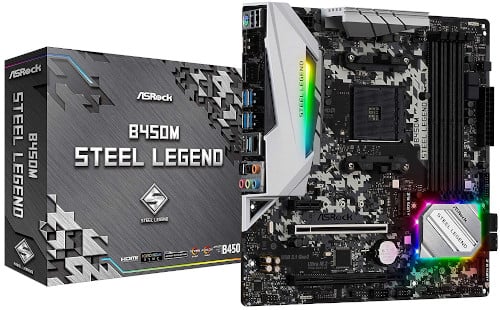
Affordable but capable
Don't allow the price tag to make you think this motherboard isn't worth considering for budget-orientated builds.
Budget Intel: MSI MPG Z490 Gaming Plus
We're still on the Z490 chipset, making the MSI MPG Z490 Gaming Plus quite the motherboard. This opens up support for 10th Gen Intel processors, but without the high price tag found with our top Intel motherboard recommendation. You do lose a few features with this motherboard, but it's more than capable of being used in a high-end PC.
We've got some pretty good VRM passive cooling, and MSI opted to include an additional four-pin PSU connector to go alongside your usual 4+4 socket. This isn't required but will come in handy if you plan to push the motherboard, RAM, CPU, and other components into overclocking territory.
MSI's BIOS is also pretty good, allowing you to change a whole host of settings without booting into Windows. A slight drawback to this motherboard is just how large the I/O cover is. It's likely not going to cause an issue if you have a huge full tower PC case, but if you plan on fitting the MPG Z490 Gaming Plus inside a mid-tower case, be sure to double-check clearances, especially with AIO solutions.
Ports-wise, we're talking PS/2, one USD 3.2 Gen 2 port, 2.5Gb LAN, two USB 2.0 ports, HDMI, DisplayPort, USB 3.2 Gen 2 Type-C, Optical S/PDIF, and finally two USB 3.2 Gen 1 ports. You'll be able to hook up plenty of PC accessories.
Pros:
- Affordable
- Supports up to 10th Gen CPUs
- Passively cooled VRMs
- Overclocking support
- Good power delivery
Cons:
- No Thunderbolt 3
- I/O cover may cause issues
Budget Intel
MSI MPG Z490 Gaming Plus
You don't need to spend much
Motherboards come in all shapes and sizes, but more affordable ones can be just as good without sacrificing on essential features.
Enthusiast AMD: GIGABYTE X399 AORUS PRO
We heard you have some money to splash on your PC build. Well, this is the motherboard you should go for if you're considering AMD Threadripper. Unfortunately, due to the physical size of these advanced processors, you can't throw one into a mainstream motherboard, so enter the X399 platform.
The AORUS Xtreme from GIGABYTE has literally everything you need to build an incredibly powerful rig. You've got full support for up to a 24-core Threadripper CPU (with 48 (!!!) threads), 8 DDR DIMM slots for quad-channel RAM, server-class power distribution for stable overclocking, and even an audio ESS 9118 Sabre DAC.
But that's not all; this thing can even support up to four GPUs, because why not? When you're planning out an enthusiast machine, the "why" doesn't really play a part in the decision making. It's choosing the very best you can afford, and this motherboard will facilitate an insanely powerful AMD PC build.
The only drawback is price, but if you're planning to buy a Threadripper CPU, this shouldn't be an issue. And with today's obscene pricing for PC components, this AORUS PRO from GIGABYTE is actually more affordable than our top AMD pick. Go figure.
Pros:
- Eight DIMM slots
- Threadripper performance
- Stable overclocking support
- High-end onboard audio
- High-quality components
Cons:
- Doesn't work with Ryzen 3, 5, 7, and 9
Enthusiast AMD
GIGABYTE X399 AORUS PRO
When there is no budget
This motherboard from GIGABYTE has everything you'll need for an enthusiast PC build. So long as you can afford it.
Enthusiast Intel: ASUS ROG Maximus XII Hero Z490
Like GIGABYTE, ASUS makes some enthusiast-grade motherboards for those with deep products. A motherboard like the ROG Maximus XII Hero is perfect for building a PC of your dreams, rocking a Z490 chipset. Fancy trying out the latest Intel Core i9-10900K? Go for it; this motherboard will be more than happy to come along for the ride.
This board is a serious piece of kit, reflected in the price. You've got large heatsinks across all the VRMs to keep everything cool, and these are high-quality, premium components. All this allows one to overclock their processor and system to get even more performance from their PC without sacrificing on system stability.
For ports on the rear, ASUS decided to go for 5Gb LAN (as well as a 1Gb port), HDMI, four USB 3.2 Gen 2 ports, four USB 3.2 Gen 1 ports, two USB 2.0 ports, Optical S/PDIF, Wi-Fi and all the audio jacks you'll ever need. It's a little pricey, though. Be sure to check the specifications and decide if you really require such a platform for your PC.
Pros:
- Great build quality
- Fat VRM heatsinks
- Good overclocking support
- Up to 10th Gen Intel CPUs
- 5Gb LAN
Cons:
- Pricey
Enthusiast Intel
ASUS ROG Maximus XII Hero Z490
All you need and more
If you have money to spare, motherboards like this ASUS option will perform admirably with high-end Intel CPUs.
ITX AMD: ASRock B450 Gaming-ITX/AC
You don't need the largest motherboard you come across to build a great PC. Smaller form factor cases are handy when you want to keep the overall dimensions of the PC low, and a Mini-ITX motherboard will help with this. By using a super-compact Mini-ITX case, it's possible to build a PC that takes up little more space than your favorite video game console.
As well as being physically smaller than ATX or micro-ATX motherboards, you retain a full PCIe slot with the B450 Gaming-ITX/AC from ASRock, can install an M.2 SSD (the slot is located on the rear of the PCB), throw in up to 32GB of RAM, and the latest Ryzen 3000 CPUs. That all sounds good enough already, but it's the price that sweetens the deal further.
And I said Ryzen 3000 series processors. That's right; you could install the Ryzen 9 3900X into this motherboard and have a small PC powered by 12 cores and 24 threads, because why not? With built-in Intel Wi-Fi, you can place a PC with this motherboard pretty much anywhere in the home.
For ports, it has the aforementioned Wi-Fi, PS/2 port, HDMI, DisplayPort, Optical S/PDIF, two USB 2.0 ports, two USB 3.1 Gen 2 ports (one is Type-C), two USB 3.1 Gen 1 ports, and 1Gb LAN. What you may not like about this motherboard is the single PCIe x16 slot, maximum RAM of 32GB, and the lack of any heatsinks for the VRM. It can get hot, and you won't be able to push your processor much further than factory settings.
Pros:
- Supports Ryzen 3000 CPUs
- Small form factor
- M.2 slot
- Intel Wi-Fi
- Decent power phase design
Cons:
- No VRM heatsinks
- Only supports 32GB of RAM
- Single PCIe 3.0 x16 slot
ITX AMD
ASRock B450 Gaming-ITX/AC
Small board for a small PC
The B450 chipset and Mini-ITX form factor allow you to install this board inside a toaster.
ITX Intel: ASUS ROG Strix Z490-I Gaming
Small form factor cases usually take Mini-ITX motherboards, which, when compared against ATX boards are tiny. ASUS managed to pack many features onto the ROG Strix Z490-I Gaming, including plenty of RGB and even two M.2 slots. This small board comes with support for up to 10th Gen processors from Intel.
But don't let the small size fool you into assuming you're unable to build a capable PC with it as the foundation. The full-sized PCIe x16 3.0 slot lets you install your favorite GPU, and with up to 32GB of RAM, it'll be ready to handle most games. Just expect to pay out a fair chunk for the liberty of using a smaller platform.
ASUS made available 2.5Gb LAN, DisplayPort, HDMI, four USB 3.2 Gen 2 ports (one being a Type-C), two USB 3.2 Gen 1 ports, two USB 2.0 ports, and the Wi-Fi 6 module. That's quite the array of expansion, especially the rapid 2.5Gb LAN that will facilitate faster LAN traffic on supported networks.
Pros:
- Small form factor
- Dual M.2 slots
- 2.5Gb LAN
- Up to 10th Gen Intel CPUs
- Wi-Fi 6
Cons:
- Pricey
ITX Intel
ASUS ROG Strix Z490-I Gaming
Perfect for compact PC builds
Rocking a Z490 chipset, this ASUS motherboard has a great spec sheet for any new Mini-ITX PC.
How to choose the best motherboard
Choosing the best motherboard for your PC largely depends on which processor you wish to use. Intel processors require motherboards with Intel sockets and chipsets, while AMD CPUs only work with respective AMD socket and chipset-touting boards. From there, you can look at price and chipset features, though really so long as you spend a fair amount, you'll be buying a really good motherboard.
Our top pick for Intel is the ASUS ROG Strix Z490-E Gaming and ASUS ROG Strix X570-E Gaming for AMD. Both of these top motherboard recommendations come with everything you need for a cracking PC build, including high-quality, reliable components, plenty of expansion options, and so much more.
The two best motherboards for either platform also allow for you to get much more from the processor than what's available from the factory, mostly with the included software handling everything for you. Other recommendations in our collection include solutions for enthusiasts, Mini-ITX builds, and those on a tighter budget.
What you should look for in a new motherboard
There are a few essential factors that should sway your decision making for a new motherboard. So long as you're not buying the lowest-priced boards, you'll generally be okay with the latest Intel and AMD processors. Here are a few things to bear in mind:
- Voltage regulator module (VRM) cooling.
- Power delivery if you plan to overclock.
- The rear port selection.
- Form factor (ITX, microATX, ATX).
- Choosing the right chipsets for AMD and Intel.
- Matching said chipsets with the correct, supported CPU generation.
- RAM support.
- Features like M.2 slots.
Our recommendations are a great place to start. We rounded up the very best for Intel and AMD processors, as well as options for Mini-ITX, budget, and enthusiast builds.
Credits — The team that worked on this guide
![]()
Rich Edmonds is a staff reviewer at Windows Central, which means he tests out more software and hardware than he cares to remember. Joining Mobile Nations in 2010, you can usually find him inside a PC case tinkering around when not at a screen fighting with Grammarly to use British words. Hit him up on Twitter: @RichEdmonds.
Richard Devine is a Reviews Editor at Windows Central. You'll usually find him deep in hardware, gaming, both or drinking root beer for which he openly has a mild addiction.
Cale Hunt is a full-time writer for Windows Central, focusing mainly on PC hardware and VR. He is an avid PC gamer and multi-platform user. When he has some free time, you can usually find him practicing the guitar or reorganizing his ever-growing library. If you hear him say, "Sorry!" it's only because he's Canadian.

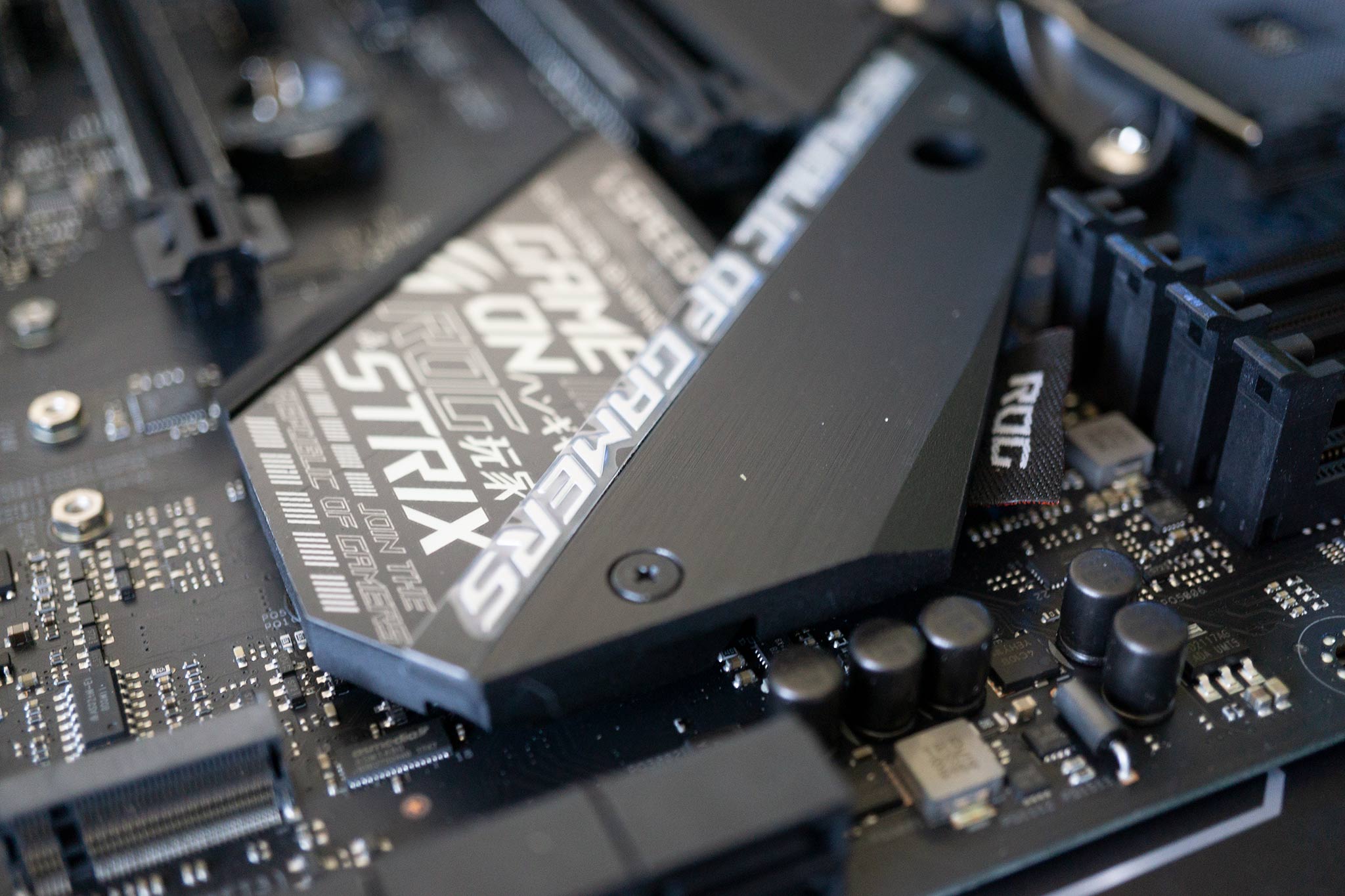

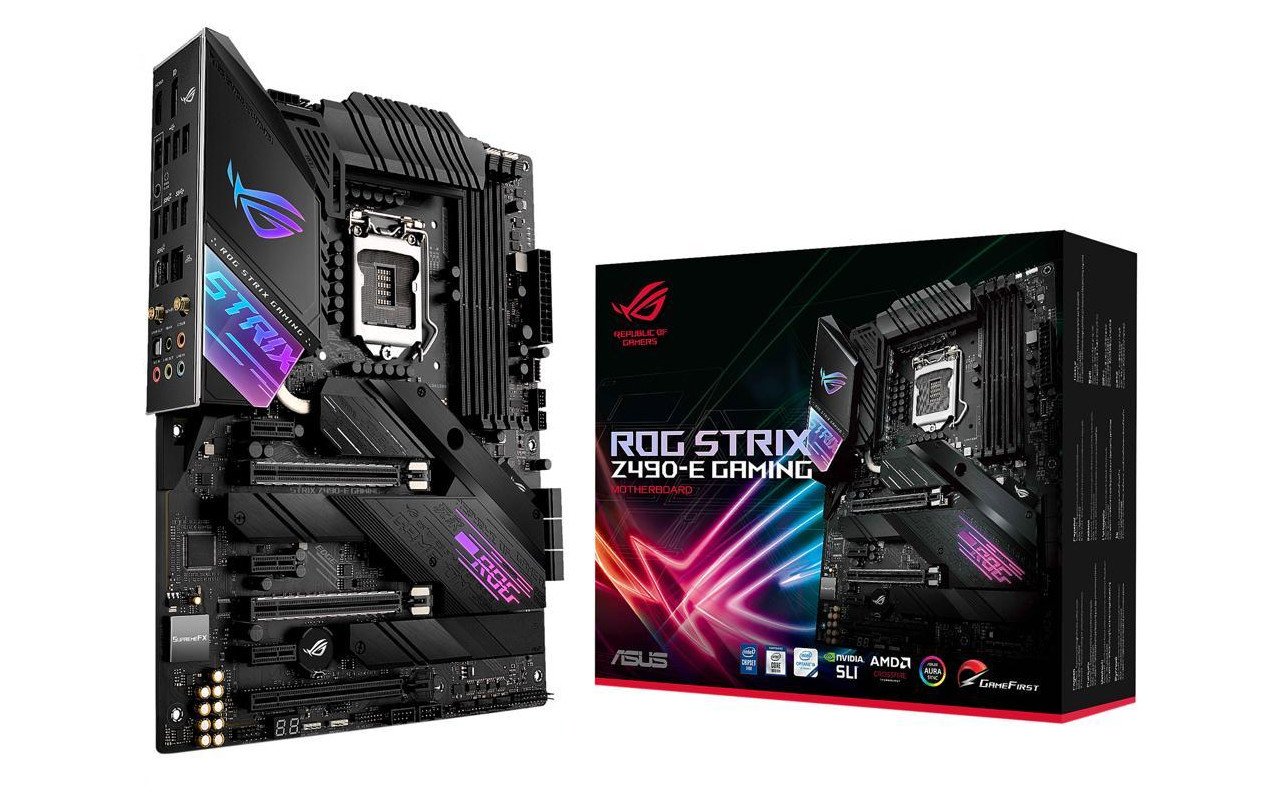

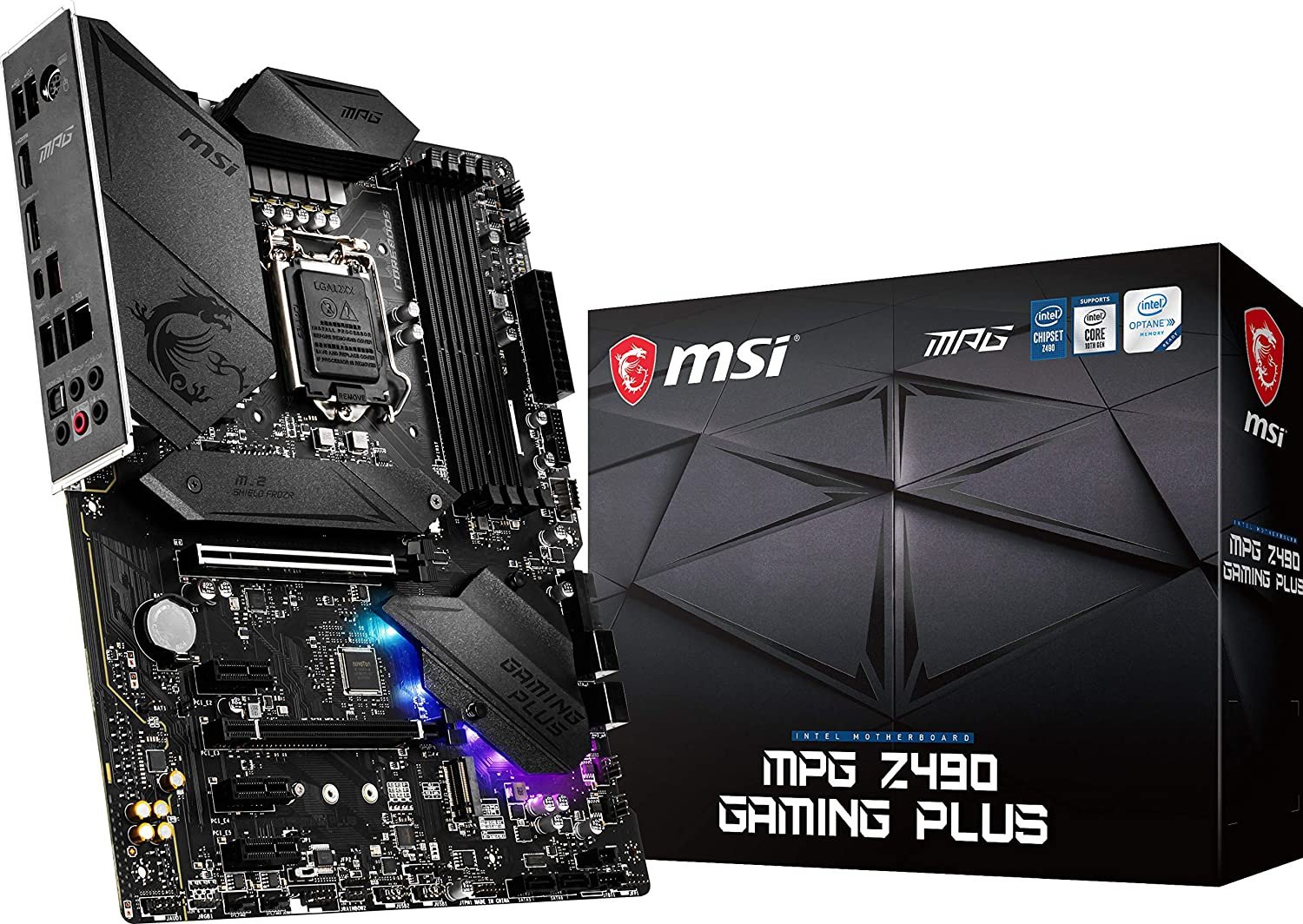
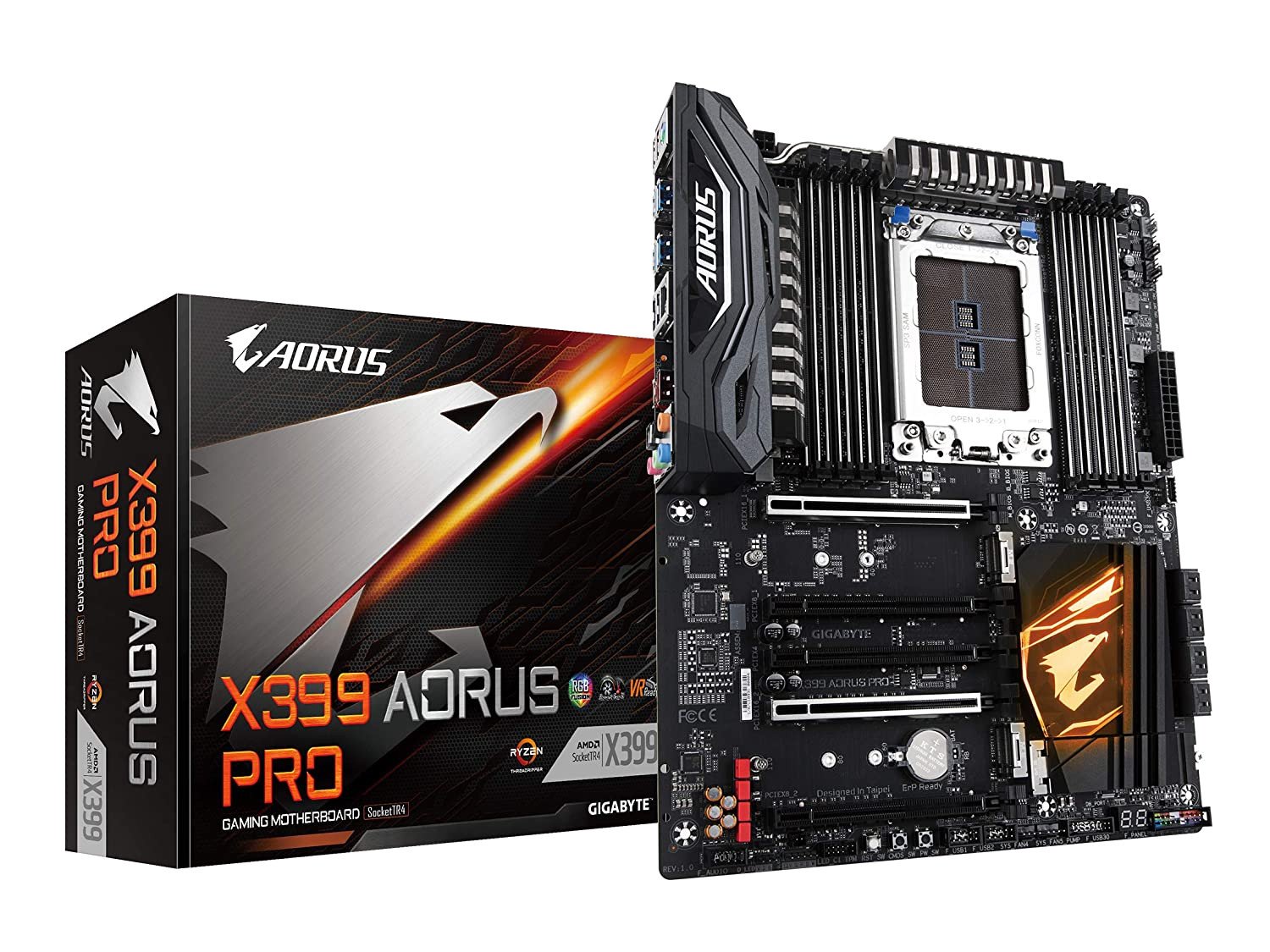
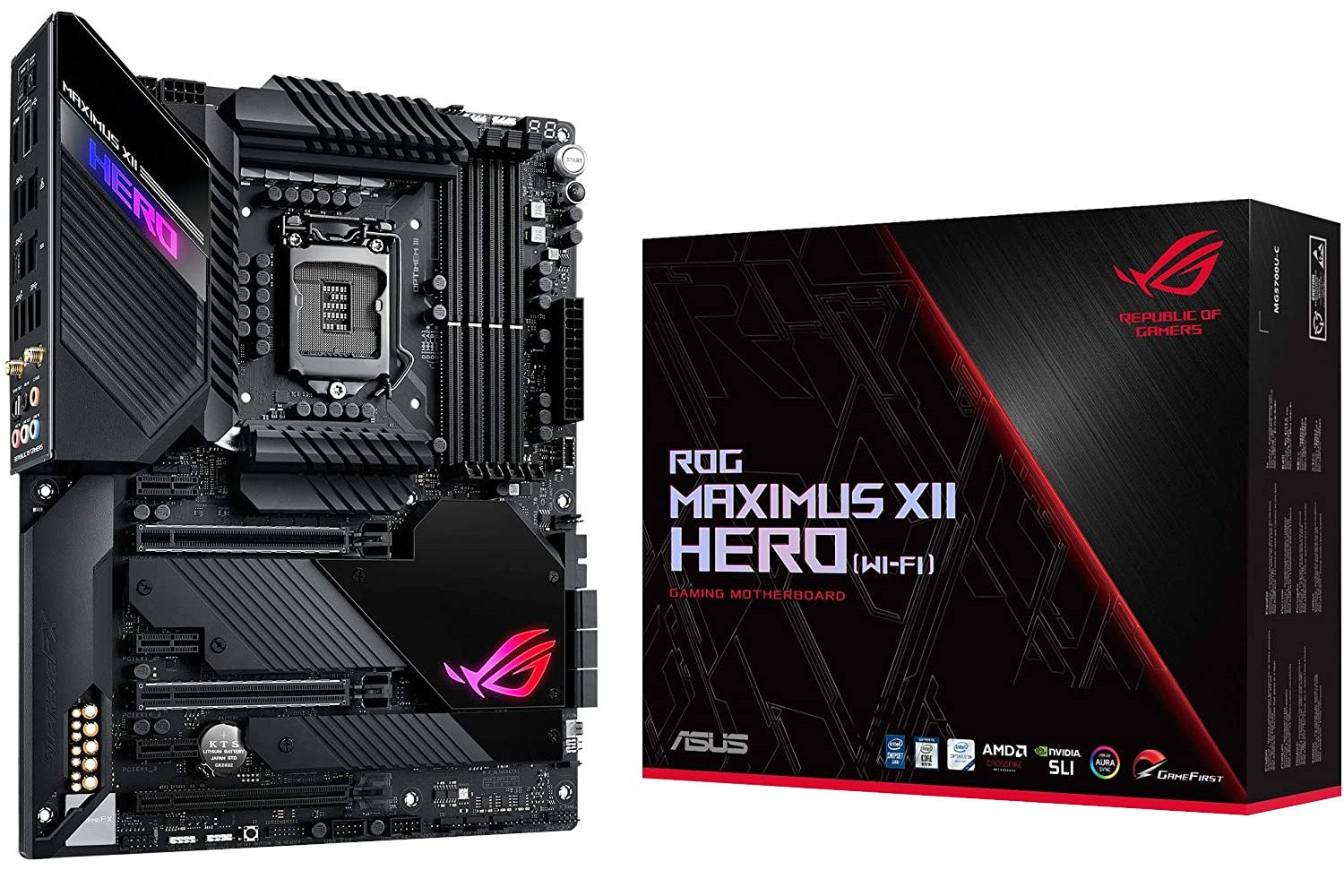
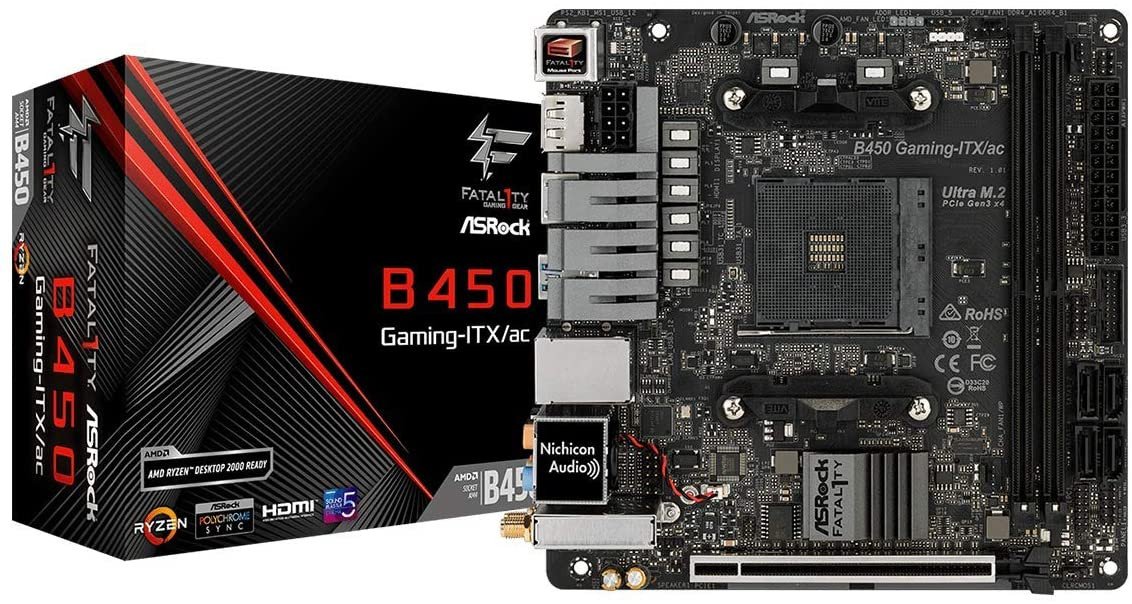
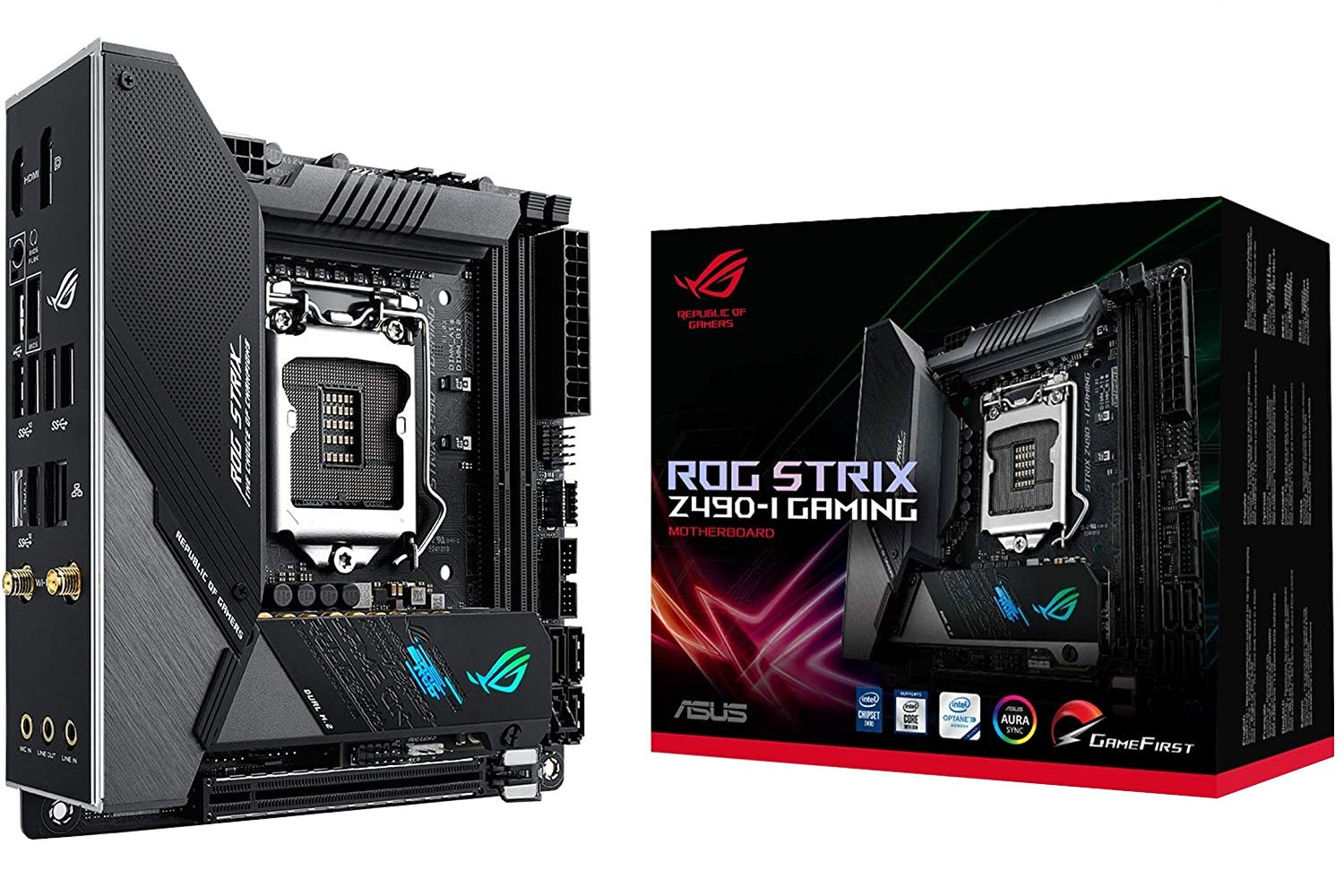
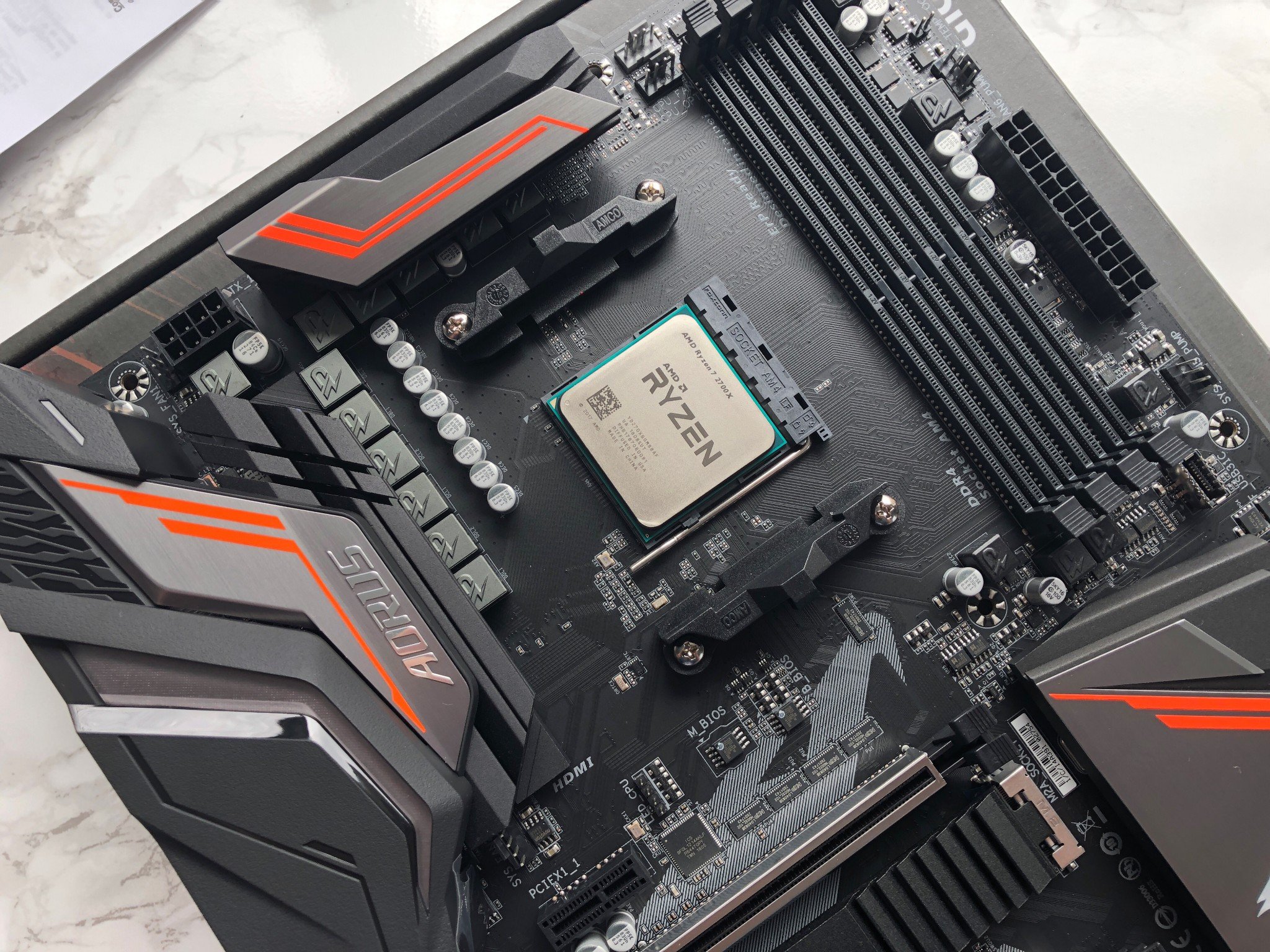



0 comments:
Post a Comment